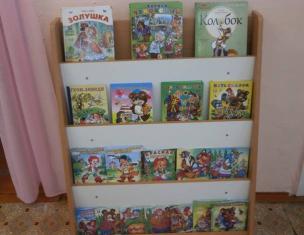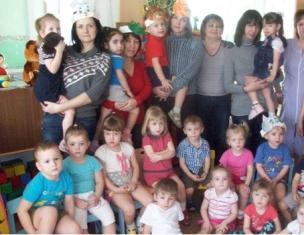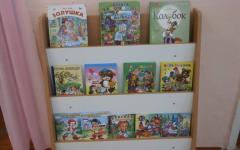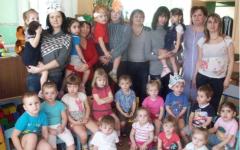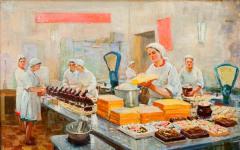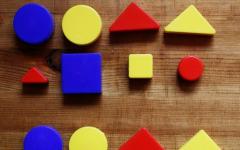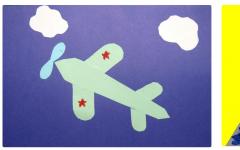One of the favorite techniques of decorative and applied arts in preschoolers is plasticography. Most kids are generally loved to draw, and drawing plasticine attracts them doubly. After all, it is very simple, and, moreover, similar images are easy to adjust. Pedagogues of kindergartens also appreciate plasticography: such classes do not require special preliminary training and has a beneficial effect on the nervous system of children.
The essence of plasticography as a type of children's creativity. Goals, methods, techniques
Plasticography refers to non-traditional modeling technique, it is a drawing of plasticine on any dense basis. Its objects and objects are obtained in a large or lesser extent relief. In addition, the plasticography allows for the inclusion of auxiliary parts - beads, beads, natural, as well as the cast material.
Opportunities in terms of development and training of preschoolers
- In the process of work, such mental processes are developing as attention and memory, logical thinking and imagination.
- Plasticography reveals the creative potential of children, and from the youngest age.
- Execution of such crafts is developing spatial orientation, sensor coordination is the functions that provide successful training in school.
- Plasticiography is a fairly painstaking process that stimulates the perishability, patience, the desire to bring the work started to the end.
- This type of modeling is improving a small motorcy - a children's hands are prepared for a letter.
- Plasticography classes are able to shoot muscle and nervous tension in children.
- With this form of creativity, the integration of educational areas (knowledge of the surrounding world, the development of speech, music) is occurring.
- With successful development of this technique, the guys can make excavation gifts to their relatives and friends, create pictures that the home interior will decorate.
We highlight the main objectives of the plasticography as a type of productive activity of preschoolers:
- Improving the skills of working with plasticine, stimulation of interest in the visual activity.
- Mastering new techniques of modeling (pressing, wrapping, rolling).
- Development skill orient on a sheet of paper.
- Improving shallow motility, eyelash, coordination of hand movements.
- Education of such qualities as accuracy, perfection, independence.
- Development of fantasy and aesthetic feelings.
Mastering the plasticography technique involves the use of various techniques during operation.With some of them, the children had already met in the classes of traditional modeling.
it rollinga piece of plasticine between the palms during which it extends and gets the form of the cylinder.
For rocking The circular movements of the palms are the formation of a ball.
Pulling out - Getting a pointed tip of the subject using movements with the tips of the fingers.
Flushing - squeezing the ball in the shape of the pellet. With the help of a stack or pressing the fingers of such a detail, you can give bend, recesses.
The following techniques are characteristic of plasticography.it alignment, pressing and wrappingwho are needed to create a flat and smooth surface. They are performed by the effort of fingertips. As for the smearing, it can be performed from top to bottom either from left to right.
In addition, when creating pictures in the technique of plasticography, the guys learn to mix different plasticine colors to obtain unusual shades. Such a laborious, but an interesting process is carried out in different ways. Slices of plasticine can be arched, and then mix in one piece. Another option - plasticine is mixed directly on the basis, the smears are superimposed alternately and smeared on the surface.
Types of plasticiography used in kindergarten
In the classroom in kindergarten, various types of plasticography are applied. The most familiar straight plasticography, in which the stucco image is formed on the horizontal surface. The kids are able to master this technique from an early age - for this, the teacher offers them a simple drawing without small details. In the older link, children create more complex compositions. A similar pattern is filled with plasticine (better than wax) on a dense sheet of cardboard (it is better to pre-crack it with a tape - it is so convenient to adjust the image). Wheelchained plasticine produces the effect of oil paint smears.
Straight plasticiography
In reverse plasticography, drawing is performed on the back of the glass or another transparent surface. In a preschool institution, plastic or plexiglass are commonly used for these purposes (since the use of conventional glass for preschoolers is unsafe). The figure is planned on the surface with the marker, and then filled with plasticine (smeared with a thin layer). According to the contour, the finished composition can be designated by stripes - the like frame will be like.
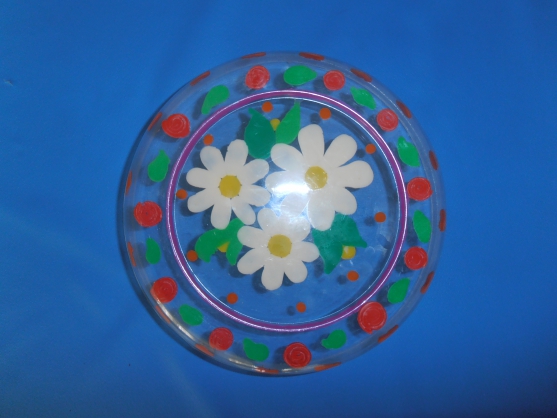
Reverse plasticography (on glass)
Modular Plasticography -picture of plasticine rollers, balls, discs and other elements. This is a more complex technique requiring children to master all the techniques of modeling.
![]()
Modular plasticography
Mosaic Plasticography -an image drawn up exclusively from plasticine balls. This is the most simple technique, the main thing here is to choose the color and gently fill the space without leaving the contour.
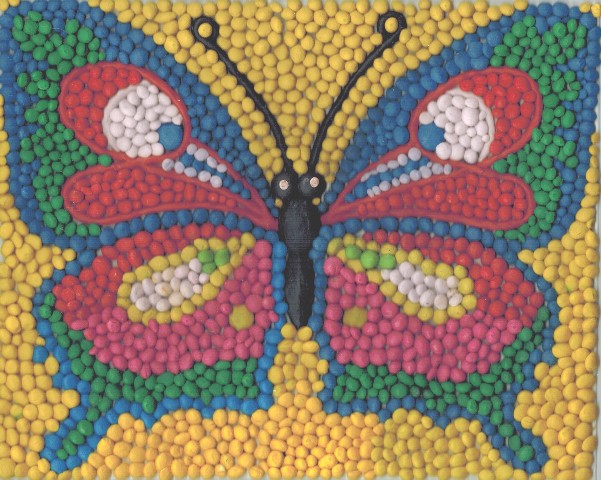
Mosaic plasticography
For Contour plasticiographymust be used fine plasticine flagellas, which indicate the silhouette of the subject.
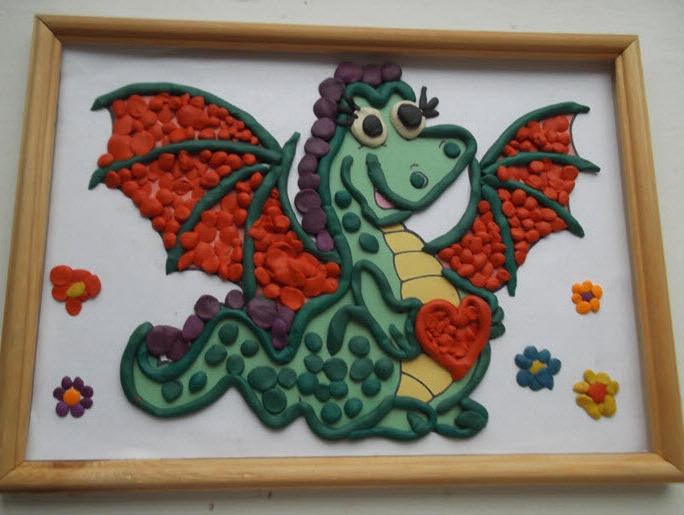
Contour plasticiography
Multilayer plasticographyit implies a sequential application not the surface of several layers. This technique is most suitable for landscape compositions - images of the sky, forests, mountains, when the layers are superimposed on each other. Elements are sometimes attached to the base with thin rollers - it turns out a kind of 3-d effect. Note that such works are quite complex for preschoolers and are relevant only in the preparatory group.
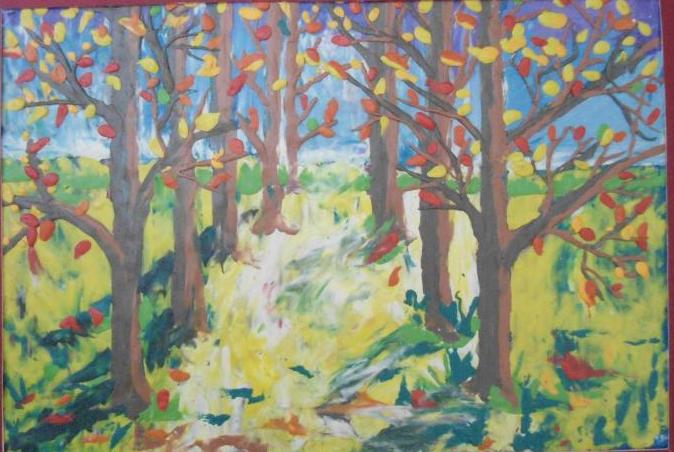
Multilayer plasticography
Textric plasticographyit is distinguished by a convex image and, in turn, it is divided into the bas-relief (the picture protrudes over the background less than half), the burner (more than half) and counter-relief (in-depth drawing).
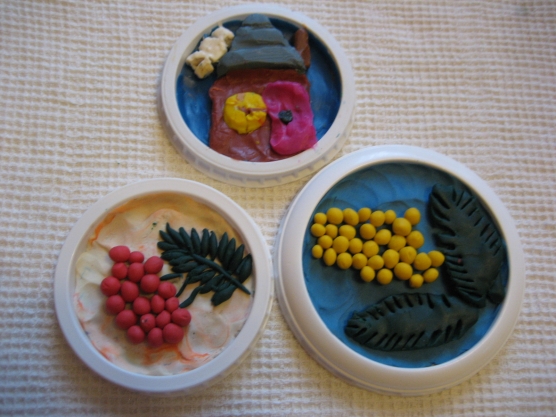
Textural plasticography (bas-relief)
Plasticiography in children of different ages. The difficulty level of crafts
Junior group
You can acquaint children with plasticiography at your earlier age - starting with a nursery group. For 2-3 years, the kids are quite capable of developing the simplest techniques - roll balls, roll out flagellas, flatten them into cakes. Of course, children's fingers are still quite clumsy, so the teacher must offer a picture with a small amount of large parts. For initial classes, such topics like "Sunny", "Flower", "Rainbow" will be perfectly suitable. The educator draws a pencil the silhouette of the subject, and the child complements its plasticine dots. For example, it may be a tree that kid will complement with red or yellow apples. Another option is a vase in which the child will depict a bouquet of flowers.
The second junior group The second junior group of plasticography in a nursery group (the trunk draws up an educator)
Medium group
To the middle group of the handle of children become more deft, and the educator can move to a more complex plasticography technique. Preschoolers 4-5 years can already create a picture of subtle flagella twisted in the form of a snail. The teacher can draw a magic bird, and the child will color her feathers with plasticine of different colors. At this age, the guys learn not to go out for the contour of the image, as well as use additional materials in the work (Crupe, Beads), which will make a picture more
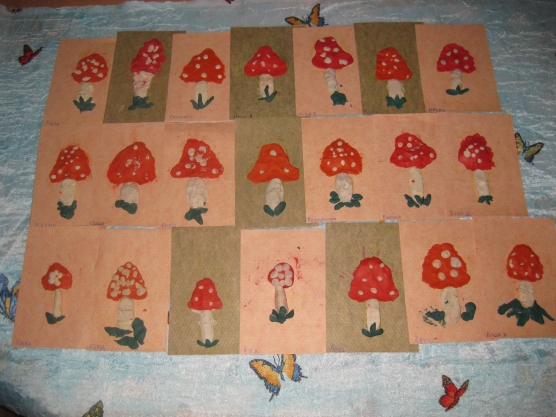
Medium group
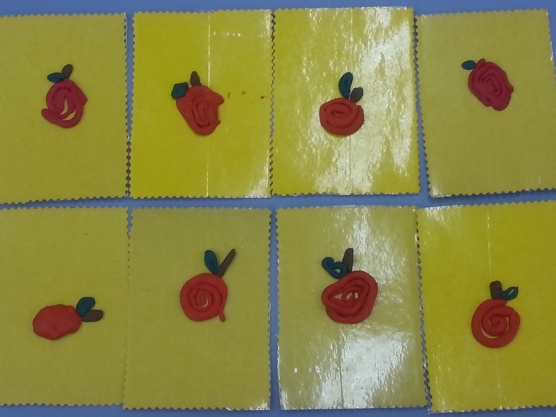
Medium group
,
In the senior preschool, children are already able to create complex compositions (images of landscapes of different times of the year, animals, humans, etc.), fantasy work. The teacher can offer for children 5-7 years old softened plasticine, which is superimposed on the basis with a syringe with thin stripes. Such a reception, no doubt, will cause the guys delight. A wonderful solution for the senior and preparatory group - collective compositions.
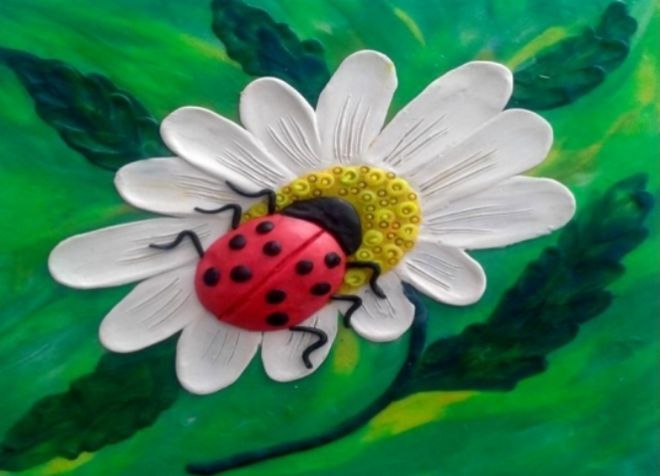
preparatory group
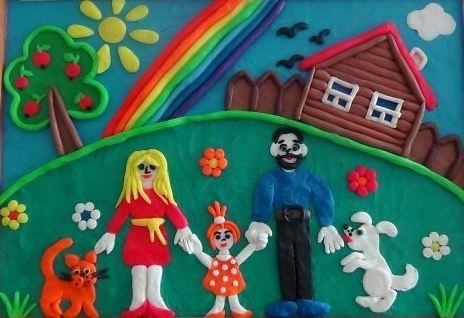
preparatory group
Plasticography classes in kindergarten may affect the different topics. It is best to coincide with the classes to familiarize themselves with the outside world. So, in the fall, it will be advisable to offer such topics as "leaf fall", "basket with mushrooms", "Daras of the Autumn" (vegetables-fruits), "Astra". After acquaintance with the theme of "birds", the guys will be glad to portray Odov, Swan or Peacock, and after the topic "Marine inhabitants" - a gold fish, dolphin, octopus. Crafts in plasticography techniques will consolidate the knowledge of wild and pets ("Hedgehog", "Cat", etc.)
In winter, the following topics will be appropriate: "Snowman", "New Year's balls", "Elegant Christmas tree", "Snowflake", "Snegir", "Penguin on the ice". In the senior preschool, it can be landscape winter compositions, including collective (such works, in principle, may affect all seasons).
In the spring will be relevant to portray the first flowers ("Snowdrops", "Dandelions"), insects ("Butterfly", "Ladybug").
In the technique of plasticography, wonderful gifts are obtained. For example, by March 8, this may be a "bouquet for mom" or a composition for dad ("tank", "flying aircraft", "Ship", etc.). So that such work was more spectacular, the surface of the finished composition is recommended to cover with colorless varnish.
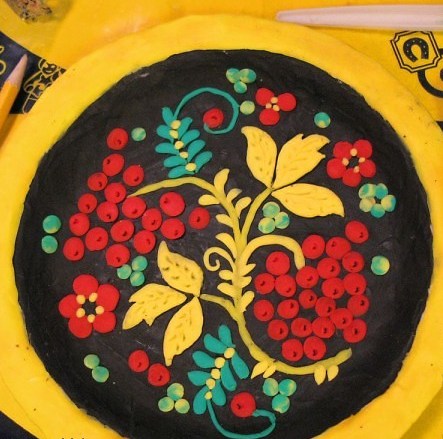 Khokhloma Patterns Mosaic Technique Modular Equipment with Effect Plasticography Using Additional Materials (Foil) Collaboration Bas-Belief Gift Mother (Modular Technique) Bas-relief Bas-relief Bas-relief Landscape composition Still life Portrait of plasticography using natural materials Modular machinery Modular machinery Mosary Gift Pape Plasticiography Gift Pape
Khokhloma Patterns Mosaic Technique Modular Equipment with Effect Plasticography Using Additional Materials (Foil) Collaboration Bas-Belief Gift Mother (Modular Technique) Bas-relief Bas-relief Bas-relief Landscape composition Still life Portrait of plasticography using natural materials Modular machinery Modular machinery Mosary Gift Pape Plasticiography Gift Pape
Plasticiography Templates in kindergarten
Before you start working with plasticine, the child needs a picture-based picture, or a pattern. Senior preschoolers usually paint them independently. Children earlier, the educator offers ready-made silhouettes. Templates are simple (the substantive) or are complex plot compositions with a multitude of small parts. The last option is acceptable, of course, for senior and preparatory groups.
Template template template template template template
Videos on "Plasticography"
Video Tutorial for preschoolers - Bullfigriography Plasticography
Master class in kindergarten on the plasticography "Fish in aquarium"
Master class on the manufacture of panels with lilies in the technique of plasticography
Abstract classes
| FULL NAME | Name of abstract |
| Bekhtereva L.N., Surovikova A.G. |
"Jablock" (middle group) Educational tasks: Learning to create an image of a tree with a plasticography, including additional natural material (pea), Developing tasks: Secure knowledge about the structure of the tree, develop a shallow motorcy, hone the skills of working with plasticine. Educational tasks: to educate interest and careful attitude to plants. Integration of educational regions: "Artistic Creativity", "Cognition", "Communication", "Socialization", "Health". Handout:sheets of color cardboard, plasticine, peas, napkins, mowing for modeling. Preliminary work:consider trees during a walk, reading fairy tales, in which apple tree or apples appear ("Gusi-Swan", "Tiny-Havroshchka", "Apple"), an appliqué exercise on the topic "Apple Tree", didactic games of such subjects. Structure occupation Riddle about an apple. Surprise moment - the appearance of the crows of Karcushi, which sits on the drawn apple tree. She talks with children about the structure of the tree. The teacher offers the didactic game "Find the same" (sort paper apples in size). Motivation - show Karcushe that Apple Tabs can be painted with plasticine. The educator demonstrates the stages of the craft. The barrel is formed from a plasticine brown flavor. Krone is a flattened green ball that you need to smear with your fingers on the cardboard in different directions. The grass at the bottom of the composition - small pieces of green plasticine. As apples are used peas that are pressed into the crown of wood. Before productive activities, children independently make hand massage with a bump. At the end of the classes, the guys show their works Karcushe, and it treats them with real apples. |
| Drynkova A. | (Junior Group) For a walk on the eve of the classes of teacher with children considers the sun. The occupation begins with reading the fairy tale V. Suteeva "under the mushroom", the kids are divided by their impressions. Motivation - poor little animals from a fairy tale lacking a sun, you need to draw it for them. Interesting moment: The teacher reports to children that they have ended with paints, and only plasticine remained. Demonstration of image receptions: contour The sun is filled with small circles (mosaic method), the rays of the sun are formulated from the sausage. Before the productive activities of children are held a mobile game "The sun came out due to clouds ..." |
| Thriller R.N. |
"Gifts with floral fairies" (Plasticine Drawing on Glass, Preparatory Group) Initially, classes are held a mini-conversation that children used to be mastered from plasticine. The teacher enshrines the knowledge of colors, asks what will happen if you mix certain colors of plasticine. Unusual motivation: the tutor tells the preschoolers fabulous history. In the magical forest on the clearing, the most beautiful flowers in the world were growing, floral fairies were cared for them. But one day an evil witch appeared, which joined the fairies - the flowers began to die, as they needed care. The task of children is to make magic flowers for fairies to argue them. The work is performed on the glass, children mix plasticine of different colors for more interesting shades. |
Plasticography project: goals, tasks, planning, reporting. "Autumn gifts" as an example of a project - Topics and photo of work
Plasticiography, one of the favorite children's classes, provides great opportunities for project activities.
The project must have a detailed theoretical basis. First of all, the educator must come up with a memorable name for him, for example, "Create Magic!" or "plasticine fairy tale."
The teacher must briefly formulate the basic idea of \u200b\u200bwork, for example "Magic with a child together will create - in this will help us with plasticine!"
Sirotkin Tatyana Vladimirovna
http://tutmama.ru/obshhee-razvitie/plastilinografiya-v-detskom-sadu.html.
Details justifies the relevance of the project (the benefits of plasticiography for the comprehensive development of children). The main goal of the activity and the components of its tasks are planned. The educator clearly indicates the age category of children involved in the project, as well as its term (short-term or long-term). In the documentation, the teacher clearly describes the paths and stages of the project implementation (preparatory, main and final), as well as the intended results of activity.
At the end of the project, the teacher compulsory reports: indicates whether the tasks were achieved. A photo exhibition is organized on the subject of the project.
If we consider specific examples, a very interesting topic for the project is "autumn gifts" (can be carried out in any age group, only the complexity of tasks changes). As part of this topic, the teacher may offer preschoolers the following works: "Autumn birch", "Lukoshko with mushrooms", "maple leaves", "miracle fruits" (vegetables and fruits), "Astra".
Draft "Autumn Gifts" Draft "Autumn Gifts" Project "Autumn Gifts" Project "Autumn Gifts" Project "Autumn Gifts"
Circle on plasticiography
resources for self-education teacher
Plasticography may well become an area for a separate circle work. Such activities are usually carried out with children, starting with the average group.
Of course, the teacher himself must be fascinated by this artistic creativity technique, to study the necessary methodical literature, the topic of its self-education must comply with this area. It is desirable to visit the seminars on plasticiography.
To create a mug, you need to take care of the necessary materials and tools (in this case it does not require special costs). The teacher thinks in advance what toys and visual benefits will be needed for classes.
In the process of work, the teacher's mug shares his knowledge with his parents, suggests them with consultation, conducts conversations, gives recommendations on household sections with children.
Before the start of activity, the plasticography circle will be appropriate to conduct survey among parents to study the interests and needs of children.
Mug program. Fragment of the program for the senior group
Before starting the work, the teacher's mug is a program in which the theoretical aspects of the topic is justified: its relevance, novelty, main goals and objectives. The educator chalks forms and methods of work. It is clearly denoted by the age of children who will visit the circle, and the implementation period (as a rule, the program is drawn up for one year). The program also attaches a list of children.
The main part of the program is thematic planning with a description of the purpose of each lesson. As an example, we give a fragment of the program of a plasticography program for the senior group (by Babakakyan A.G.):
| Month | Subject | Goal |
| October | Acquaintance of children with plasticography. Autumn leaves. | Conversation about plasticography. Show the educator of finished work, using this technique, with a reflection of convex volume images on the horizontal surface. To acquaint children with a concept - stencil, show and teach techniques to work with him. Develop a fine motility of hands, develop a color perception, the ability to properly choose the tone of plasticine, graphic skills (skill work with a stack as a pencil, using the reception of scratching); Rise aesthetic feelings through the perception of paintings of great artists about autumn, laying the prerequisites of love for nature and careful relations. |
| Mushroom mushrooms rose in the leaf | Improve the skills of working with plasticine in the technique of "Plasticine Drawing" - cutting with scissors, rubbing in shape. To form in children a generalized concept of mushrooms, their varieties, qualities. Learning to find compliance between the forms of real and depicted mushrooms, transmit their natural features, color. Develop creative imagination and thinking; Muscular activity of hands. Educating accuracy in work, the desire to make the work started qualitatively and fully; Feeling collectivism. | |
| My garden and garden | Continue the development of plasticography techniques - fasten the "rubbing" technique of plasticine over the surface. Fasten the skills carefully use plasticine in your work. Learning to use a contour picture as the basis of the image. Fasten the ability to classify fruits and vegetables. Develop Motoric Hands, Develop Creative Activity and Independence; Call a desire to make a useful thing - didactic game, bring up feelings of unity from the process of collaborative work. | |
| Sovka - Owl. Big head | Learning to mix plasticine, not allowing full color absorption with each other. Teaching the use of the "rolling" - a tube from glue pencil to rolling plasticine over the surface. Develop creative abilities, independence and activity. Develop a shallow motility of hands when performing work techniques with plasticine. Develop a color perception. Educating the effort and perseverance in work, the desire to correctly and fully perform the work. Educating honesty and critical when evaluating "drawings", learning to prepare a background of work (branch, moon, balls). | |
| November | gold fish | Improve technical skills to work with plasticine. Develop a figurative perception, logical and creative thinking. Develop children's creativity through acquaintance with various ways and materials. Educate dedication, wiping creative work. Find out the desires and aspirations of children (with the help of goldfish). |
| Worm in an apple | Performing work as an educator using different techniques of modeling. Fasten the skills carefully use plasticine in your work. Learning to use a contour picture as the basis of the image. | |
| Cachelotik - Cachelot. | Continue the development of plasticography techniques - fasten the "rubbing" technique of plasticine over the surface. Fasten the skills carefully use plasticine in your work. | |
| Octopus | Continue the development of plasticography techniques - fasten the "rubbing" technique of plasticine over the surface. Fasten the skills carefully use plasticine in your work. Learning to use a contour picture as the basis of the image. Develop Motoric Hands, Develop Creative Activity and Independence; Call a desire to make a useful thing, bring up feelings of unity from the process of your labor |
Plasticiography monitoring, features
The plasticography monitoring system does not include any special forms and types of children's activities. Diagnosis is carried out through observation, which occurs in the process of individual and collective classes.
This issue is especially relevant for circle activities - helps more effectively organize classes.
The teacher estimates the following parameters.
1. Mustache activity
a) increased interest, creative activity - high level
b) the child is active, there is an interest in this type of activity, but performs work on the instructions of the teacher - the average level
c) the child is not active, performs work without much desire - low
2. Sensory abilities
a) the form is transmitted accurately. A variety of color gamut, transmitted real color, expressive image - high level
b) There are minor distortion. Paint retreats - medium level
C) the form failed. Indifference to color, monochrome - low level
3. Composition
a) along the entire plane of the sheet follows the proportionality between objects - high level
b) on the sheet of sheet with minor elements - the average level
c) not thoughtful wearing random character - low
4. Total manual skill
a) well developed motility hands, accuracy - high level
b) handmade cleaverity is developed - medium
c) Motoric hands are poorly developed, help is required - low level
5. Independence
a) performs tasks on their own, without help. The child independently chooses the topic, the idea, knows how to plan his actions, chooses expressive funds, brings the work started to the end - a high level
b) requires minor assistance - the average level
c) performs task using a teacher, support and stimulation is needed - low levels
6. Indicators of technical skills
- Rolling
Slipping
a) performs independently - high level
b) a small help is required - the average level
c) performs actions using a teacher - low
- Melting
a) performs independently - high level
b) a small help is required - the average level
c) performs actions using a teacher - low
Plasticography includes a lot of opportunities for the disclosure of the creative potential of preschoolers, as well as for the self-education of the educator. This technique is an excellent base for project activities and circle. The kids love to do with the plasticine, and when they find this material with original use, they receive real pleasure and are able to create real masterpieces.


